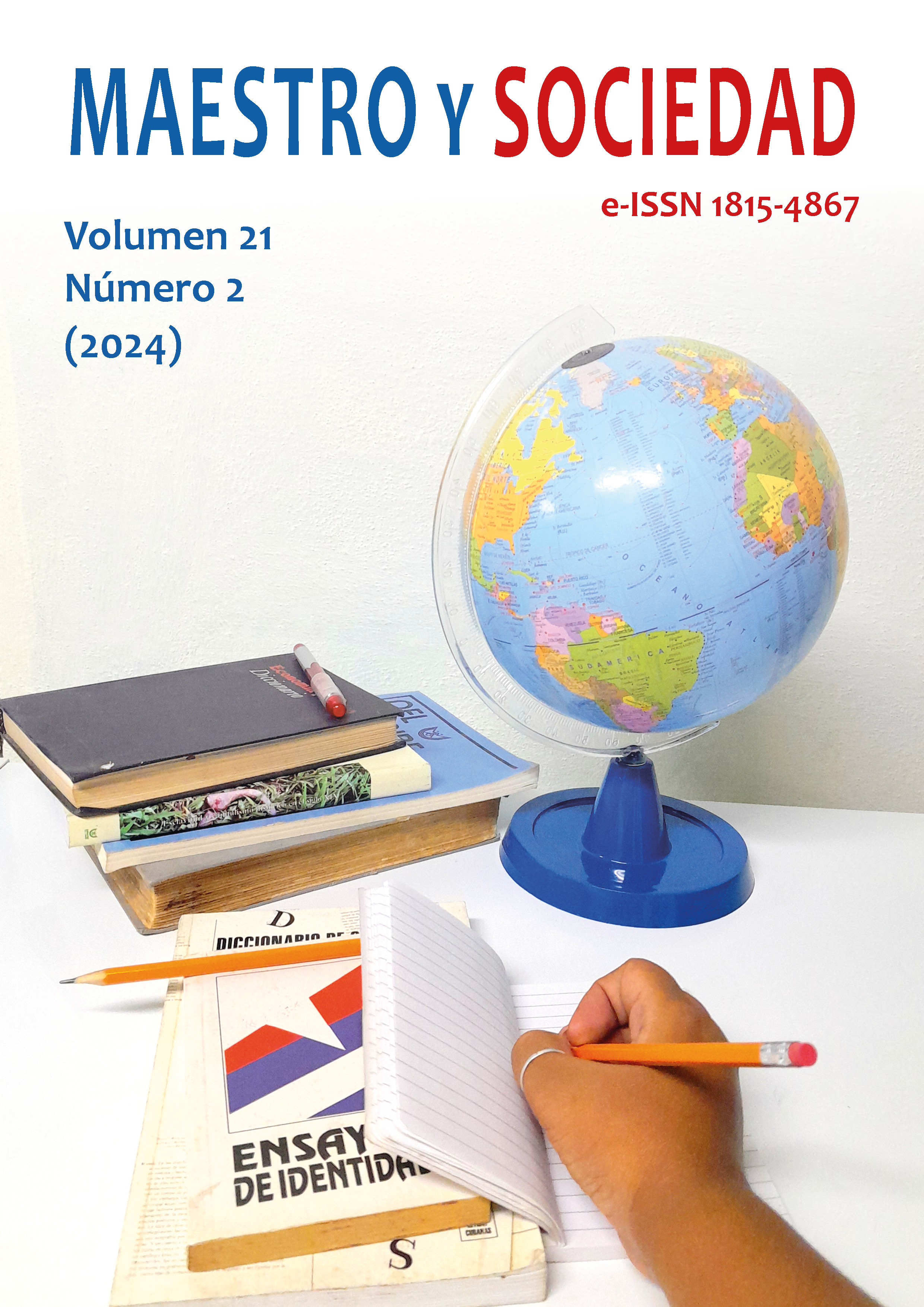Storytelling for learning in social sciences of the “José María Aspiazu y Aviles” educational unit
Keywords:
strategies, didactics, storytelling, teaching, narrativeAbstract
Introduction: Within the framework of the innovation process in teaching strategies, Storytelling appears as an important component for the renewal of the Social Sciences Area. Indeed, Storytelling allows us to shake up classroom techniques, teaching processes, and the roles of each actor in the educational community. This is how the research proposes a combined and innovative option of the different resources, to generate a dynamic and transformative strategy in the Eighth Year of Basic General Education of the “José María Aspiazu y Avilés” Educational Unit. The research will be based on the theoretical outlines of authors: Domingos (2009), Diego Rivera (2010), Carlos Solari (2013), which will provide substance to Storytelling, the teaching of Social Sciences, and educational alternatives. Materials and methods: Well, it is projective in type, with a field design supported by the objectivist paradigm with a temporality of a contemporary transectal nature. The analysis population will be the Eighth Year students of Basic General Education from 12 to 13 years old from the “José María Aspiazu y Avilés Educational Unit”, the survey technique will be used, which will be analyzed from the quantitative approach with the tool of descriptive statistics of the frequency distribution. Results: The students agree on the deplorable methodology used by teachers in the area of Social Sciences, obsolete resources that did not generate learning and killed interest in the subject. Discussion: Storytelling was born as a valid alternative to respond to the concerns and needs of a new framework of methodologies that motivate and attract students to a new, different teaching-learning process focused on the impact that the content can cause with a good treatment thereof. Conclusions: Establish the findings of the teaching strategies of the students of Higher Basic General Education in the area of Social Sciences of the “José María Aspiazu y Avilés” Educational Unit in the 2020-2021 school year: the findings are obvious, accumulation of contents without body or soul to be learned, a teacher with limited methodological strategies to reach the students, apathetic authorities in the face of a problem that ate away at the teacher and annihilated his interest in knowing, limited resources such as the blackboard, marking and little else were part of the educational crisis in the area of social sciences.
References
Asamblea Constituyente. (2008). Constitución de la República del Ecuador. https://www.oas.org/juridico/mla/sp/ecu/sp_ecu-int-text-const.pdf
Busquiel, R. (2021, marzo 18). “La Educación activa”: Un libro hecho por profes paraprofes. Magisnet. https://www.magisnet.com/2021/03/la-educacion-activa-un-libro-hecho-por-profes-para-profes/
Cataldo, K. C., & Olivos, C. D. (2017). Manual de estrategias didácticas: orientaciones para su selección. INACAP.
Hurtado, J. (2010). Guía para la comprensión holística de la ciencia Unidad III. http://dip.una.edu.ve/mpe/017metodologiaI/paginas/Hurtado,%20Guia%20para%20la%20comprension%20holistica%20de%20la%20ciencia%20Unidad%20III.pdf
MinisteriodeEducación. (2015). Ley Orgánica de_Educación Intercultural LOEI codificado. pdf.https://educacion.gob.ec/wp-content/uploads/downloads/2017/02/Ley_Organica_de_Educacion_Intercultural_LOEI_codificado.pdf
Ministerio de Educación Argentina. (2020, mayo 4). Aprendizaje integrado... Educrea. https://educrea.cl/aprendizaje-integrado/
Palermo, U. de. (2019). ¿Qué es el storytelling?Todo sobre el arte de contar historias. Universidad de Palermo. https://www.palermo.edu/negocios/que-es-el-storytelling.html
Preserval, J. M. (2015). Historia Mundial de la comunicación. 4.
Quinquer, D. (2004). Estrategias metodológicas para enseñar y aprender cienciassociales: interacción, cooperación y participación. 10.
Ramírez, O. (2017). Educación Activa. 1819-9623.https://ridda2.utp.ac.pa/handle/123456789/226
Republica delEcuador. (2010).ec023es.pdf.https://www.wipo.int/edocs/lexdocs/laws/es/ec/ec023es.pdf
Secretaria Nacional de Planificación. (2021). Plan de Creación de Oportunidades 2021-2025 Aprobado. https://www.planificacion.gob.ec/wp-content/uploads/2021/09/Plan-de-Creacio%CC%81n-de-Oportunidades-2021-2025-Aprobado.pdf
Published
How to Cite
Issue
Section
License
Copyright (c) 2024 Karina Elizabeth Narváez Ramos, Gina Manuela Macías Zambrano, Tania Jessenia Alvarez Laborde, Margarita Esperanza Abalos Mazabanda

This work is licensed under a Creative Commons Attribution-NonCommercial-NoDerivatives 4.0 International License.
This journal provides immediate open access to its content, based on the principle that offering the public free access to research helps a greater global exchange of knowledge. Each author is responsible for the content of each of their articles.



























 Universidad de Oriente
Universidad de Oriente 